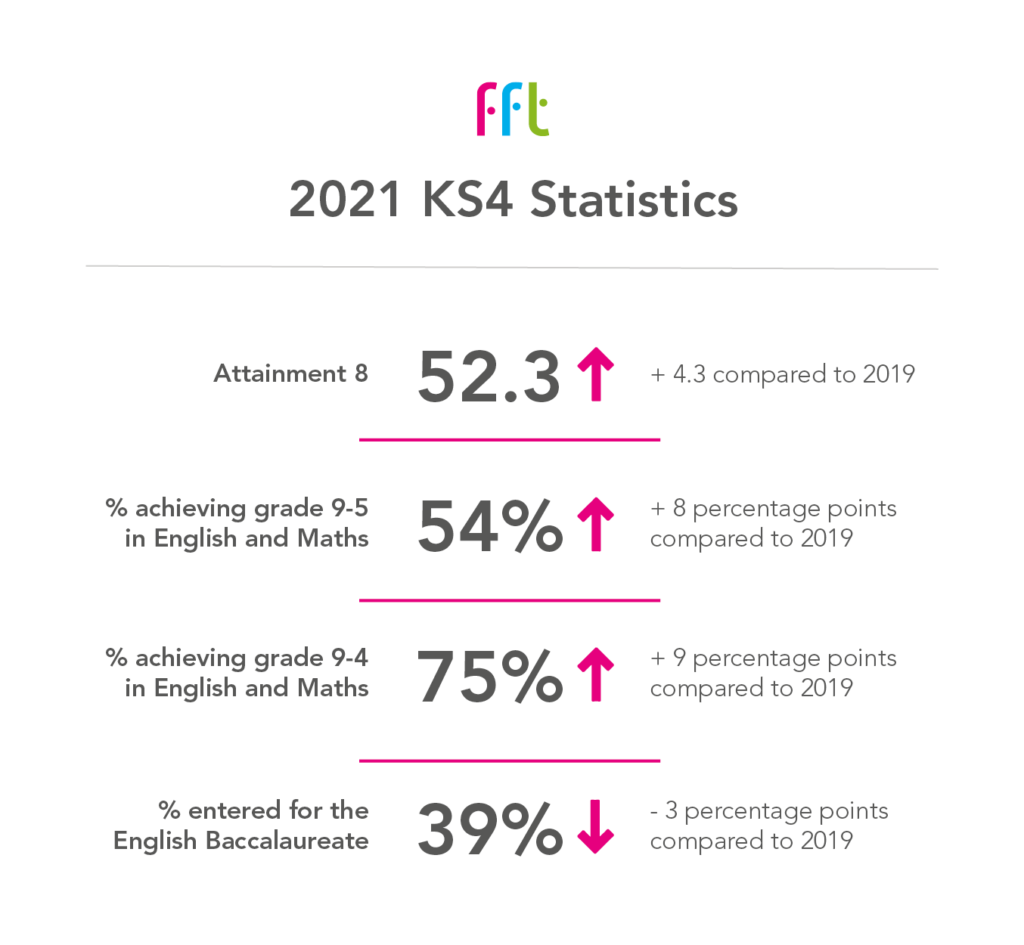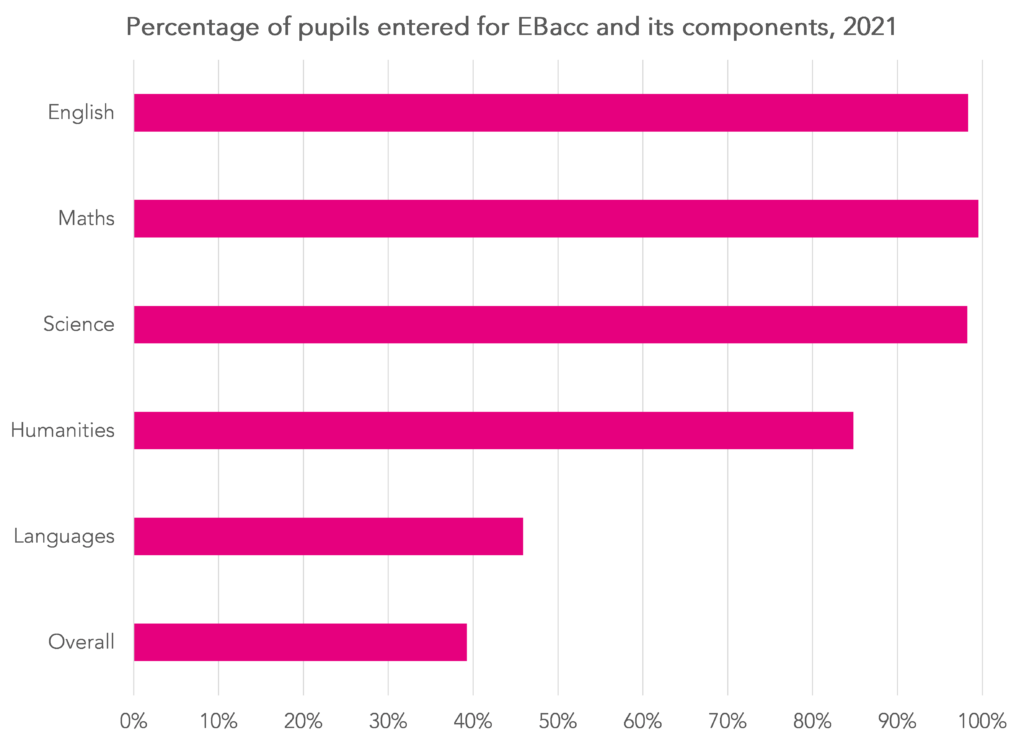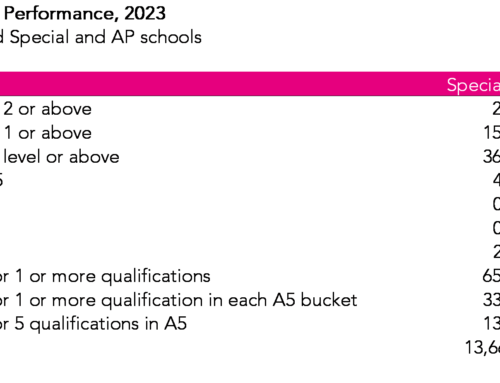This blogpost is part of FFT’s 2021 Secondary Results Service. Reports are now available in FFT Aspire.
We saw on results day back in August that grades were slightly higher in 2021 than in 2020 although this was not the case in all subjects.
What we didn’t have a sense of was the impact on performance measures that are calculated from results in several subjects.
So in this blogpost we’re going to look at the change in results from 2019 to 2020 to 2021 in four key indicators: Attainment 8, the percentage of pupils achieving grade 4 or above in both English and maths, the percentage of pupils achieving grade 5 or above in both English and maths, and the percentage of pupils entering the English Baccalaureate.
This should give a flavour of the sorts of figures we’ll see when the Department for Education publishes its statistical first release later this term.
Data
We have data for almost 1,400 state-funded mainstream secondary schools who participated in the in both 2020 and 2021 and for which we have linked back to published performance data for 2019.
Our analysis covers just these schools.
Back in 2019, the Attainment 8 score for this set of schools (48.0) was slightly higher than the national average for all state-funded mainstream secondary schools (47.6).
Headline results
We’ve picked out the key headlines at a national level in the graphic below.
Attainment 8 scores increased among our sample of schools from 48.0 in 2019 to 52.3 in 2021, a change of 4.3 points.
The percentage of pupils awarded grade 4 or above in both English and maths at GCSE increased from 67% in 2019 to 75% in 2021. These pupils will avoid having to resit in Year 12.
However, the percentage of pupils entered for the English Baccalaureate appears to have fallen slightly since 2019.
It won’t come as any surprise to readers of this blog that this is due to lower rates of entries in languages compared to the other components of the EBacc.
The new ministerial team at the Department for Education may well think it’s worth abandoning the target of 75% of pupils entering the EBacc by next year.
Regional differences
Headline statistics for the regions can be found in the appendix [XLSX].
Compared to 2019, the Attainment 8 score at schools in the North West in our sample increased by 3.8 points. This compares to 4.8 points in the North East and South East.
Attainment 8 statistics for disadvantaged pupils in each of the regions are also included.
Disadvantaged pupils
We’ve previously shown that we think the disadvantage gap will widen this year based on attainment in English and maths.
A similar thing has happened with Attainment 8. The average score of disadvantaged pupils fell by 0.1 points between 2020 and 2021, compared to an increase of 1.6 points for other pupils. But compared to 2019 the scores for both groups increased by similar amounts.
Want to stay up-to-date with the latest research from FFT Education Datalab? Sign up to Datalab’s mailing list to get notifications about new blogposts, or to receive the team’s half-termly newsletter.








Leave A Comment